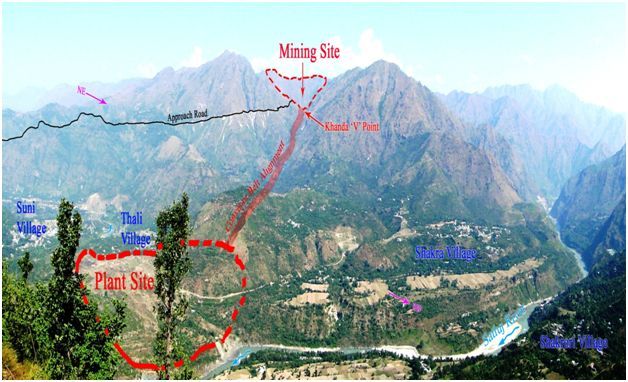Shimla: Fate of political leaders vying for a seat in the Himachal assembly lying locked up in electronic voting machines, green activists opposing setting up of large hydropower plants, more cement plants and listing support for protecting Himalayan environment are demanding an eco-sustainable development model be the debating agenda before the new assembly that is yet to be constituted.
“Mega dams, large hydroelectric projects, chemical industries, cement and mining for lime stone should be put in the red list and banned,” says Guman Singh, coordinator at Himalaya Niti Abhiyan (HNA), an umbrella organization of civil society activists and green NGO’s.
Drawing attention of political parties through the campaign to environmental concerns, Singh adds, “it was first time that land grab, displacement and destruction of eco systems came into election debate and though we had tried to push for these issues, they did not form part of the main political debate.”

Pointing out the case of the 3 million ton per year capacity Alsindi cement plant, proposed to be set up along Satluj river close to thickly habituated the townships of Tatapani and Sunni by French conglomerate Lafarge, Ganga Singh Thakur, a lawyer activist who is part of HNA says, “such an plant in close vicinity to our farm and orchard lands would be a disaster to the clean and green valley.”
Mentioning the location of nearby three large cement plants, Barmana (ACC), Darla (Ambuja) and Baga (Jaypee), all draining into a small portion of Satluj basin, Thakur says, “the courts are seized of the matter as local residents are all opposed to the proposed new plant.”
While the green activists, the project promoter and the state government contest setting up more cement plants before the courts, a high court appointed expert committee recommended that approval to the new cement unit only be given after undertaking a cumulative environmental impact assessment of all nearby existing cement units.
Spelling out a regional development agenda for Himachal and the neighbouring Himalayan region, HNA has sought mountain specific planning approaches to address geological, ecological, protection to local livelihoods and economic development issues in a sustainable manner.
“Facing the onslaught of an unwarranted industrial package,” Singh says, “instead a Green Development Package should be provided to the Himalayan region so that it can sustain its capacities to regenerate eco-services that it provides to downstream regions.”
Demanding that the Himalayan region be declared an eco sensitive zone, the green organization has sought from the new assembly, which would only come into being after the poll results are declared on December 20, a paradigm shift in policy for safeguarding the region.
As Editor, Ravinder Makhaik leads the team of media professionals at Hill Post.
In a career spanning over two decades through all formats of journalism in Electronic, Print and Online Media, he brings with him enough experience to steer this platform. He lives in Shimla.




We all should come forward to support this NGO, who is spear heading such a good movement to save Himachal and particular to Himalaya from eco-disaster.
Every local must get behind this at a time when a lot of pressure are on governments to stop the destruction of natural habitat. I remember when I first ever went to kulu and manali I like all tourist was astounded by its beauty. I returned 10 years later and was horrified to see the so called progress that politicians claimed to have made but all I could see was destruction and fat MLA,s giving road contracts out to family and friends just to benefit themselves and to be more powerful. Power is with the people so please protect what you have left as when its gone its really gone.